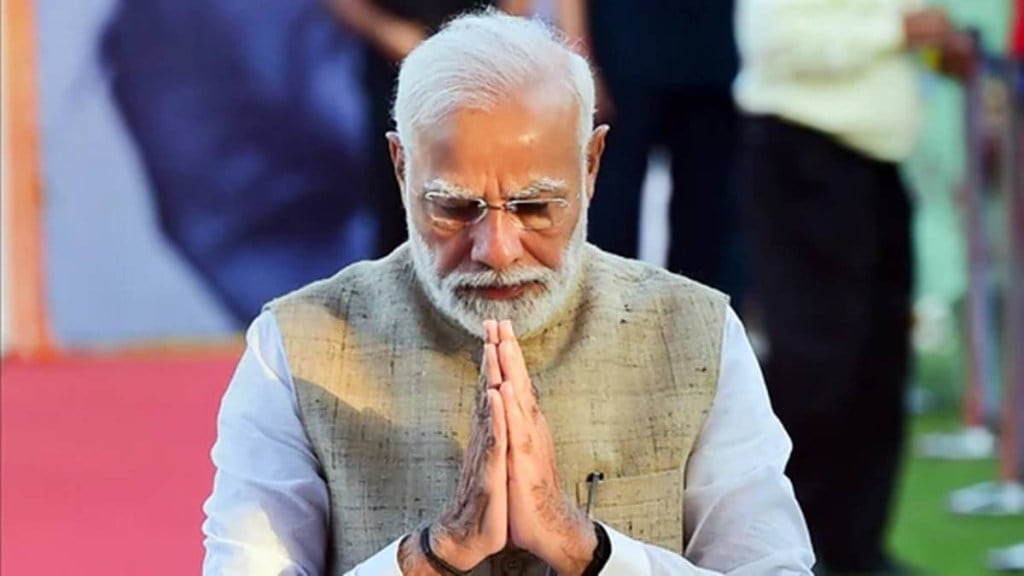Till Tuesday morning, India was debating whether the National Democratic Alliance (NDA) will be able to walk the talk on ‘abki bar 400 par’ and whether the Congress will be able to hold on to its strength of 52 in the Lok Sabha.A couple of hours later, the 400 figure looked like a bad joke as a stunned nation was busy assessing whether the BJP would be able to form a government on its own. That hope was also dashed as soon as it became clear that the party will have to depend on at least two of its key allies — Chandrababu Naidu’s Telugu Desam Party and Nitish Kumar’s Janata Dal (U).
While the TDP was ahead in 16 seats, the JD(U) led in 12. That means, Prime Minister Narendra Modi will for the first time in his life have to practise the coalition dharma.Contrary to exit polls that predicted a landslide for the ruling alliance, the BJP’s leads hovered around the 240-mark in the evening (down 63 from its 2019 tally of 303), ending a decade of single-party dominance. The NDA tally was at 293, which was much more than the halfway mark needed to form the next government.The BJP suffered major reverses, from the East to the West, the heartland state of Uttar Pradesh, and could not make expected gains in the South.
In first remarks, Modi, in a post on X, said, “People have placed their faith in NDA, for a third consecutive time! This is a historical feat in India’s history. I bow to the Janata Janardan for this affection and assure them that we will continue the good work done in the last decade to keep fulfilling the aspirations of people. I also salute all our Karyakartas for their hard work. Words will never do justice to their exceptional efforts.”There was cheer in the Opposition INDIA camp, although it could not cross the halfway mark on its own.
While the Congress fell one short of the three-digit mark, up from 52 last time, the SP cruised to 37 from a mere five seats in Uttar Pradesh in 2019. The TMC improved its 2019 tally of 22 seats to 29 in West Bengal, and the DMK maintained its sway over Tamil Nadu by posting leads in 22 seats.The NCP faction of Sharad Pawar, too, led on seven seats and the Shiv Sena (UBT) of Uddhav Thackeray on nine seats. The RJD was ahead in four constituencies and the AAP in three.The biggest shock for the BJP came from Uttar Pradesh, where it had won 62 seats in 2019 and 71 seats in 2014.
In fact, the reversal in Uttar Pradesh is the story of this election. The BJP’s numbers almost halved as it won and led in just 33 seats. The remarkable comeback of the SP, ahead in 37 constituencies and the Congress in six, left the BJP gasping.The BJP also faced setbacks in several states where the party dominated in 2019. Among them were Maharashtra, Haryana, Rajasthan and Karnataka. The party took a hit in West Bengal as well.The only good news for the BJP came from Odisha where its tally jumped from eight to 19, leaving one each to the BJD and the Congress.
The BJP also stunned the ruling BJD in Odisha, ousting it from power in the state.The party opened its account in Kerala and doubled its seat tally from four to eight in Telangana.In Maharashtra, the BJP’s tally came down to 10 from 23 and in Rajasthan 14 from 25. It had won all the 25 seats in Rajasthan in 2014 and 2019 and returned to power in the state just a few months ago.
In Karnataka, where the BJP had 25 of the 28 seats, its tally came down to 17. In Haryana, the BJP lost five of the 10 seats it had. In West Bengal, where the party was hoping to make major gains, it could win only 12, down from 18 in 2019. In Bihar, too, the BJP suffered reverses as its tally came down from 17 to 12.In Tamil Nadu, where the BJP was projected to pick up some seats, the party could win none. Its vote share, however, crossed the 11% mark compared to 3.62% last time.In Andhra Pradesh, the BJP led in three seats, up from zero last time. Three regional parties, the BJD of Naveen Patnaik, the BRS of K Chandrasekhar Rao and Mayawati’s BSP, faced a rout. While the BJD was leading on just one Lok Sabha seat, the BRS and the BSP drew a blank.
In MP, the BJP was making a clean sweep, with former chief minister Shivraj Singh Chouhan, who was eased out of his post despite the BJP’s victory in the state Assembly elections months ago, was leading by a whopping margin of over 821,000 votes. In Gujarat too, the BJP was ahead in 25 out of the 26 seats in the state.The elections also highlighted the unexpected role of the Samajwadi Party in Uttar Pradesh — under Akhilesh Yadav — as a giant slayer.The campaigning for the elections, which were conducted from April 19 to June 1 in seven phases, was marked by divisive communal issues and excessive reliance on Modi for getting votes. The PM held more than 300 rallies, travelling tirelessly almost every day to multiple locations.

